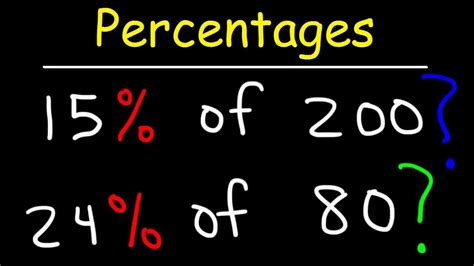How to Calculate a Percentage: A Simple Guide
Percentages are a fundamental part of everyday life, used in everything from calculating discounts and sales tax to understanding statistics and financial reports. Knowing how to calculate percentages is a crucial skill, and thankfully, it's easier than you might think. This guide will walk you through different methods, from basic calculations to more complex scenarios.
Understanding Percentages
Before diving into the calculations, let's clarify what a percentage actually is. A percentage represents a fraction of 100. The symbol "%" signifies "per hundred" or "out of 100." For example, 50% means 50 out of 100, or 50/100, which simplifies to 1/2.
Basic Percentage Calculation: Finding a Percentage of a Number
The most common percentage calculation involves finding a certain percentage of a given number. Here's the formula:
(Percentage/100) * Number = Result
Let's say you want to find 20% of 500. Here's how you'd do it:
(20/100) * 500 = 100
Therefore, 20% of 500 is 100.
Example Scenarios:
- Calculating Sales Tax: If a product costs $100 and the sales tax is 6%, the calculation would be (6/100) * $100 = $6.
- Determining Discounts: A 15% discount on a $200 item is calculated as (15/100) * $200 = $30.
Calculating the Percentage One Number Represents of Another
This scenario involves finding what percentage one number represents of another. The formula is:
(Number1 / Number2) * 100 = Percentage
For instance, if you scored 45 out of 60 on a test, what percentage did you achieve?
(45 / 60) * 100 = 75%
You scored 75% on the test.
Example Scenarios:
- Tracking Progress: If you aimed to read 100 books this year and you've read 70, your progress is (70/100) * 100 = 70%.
- Analyzing Survey Results: If 30 out of 100 respondents chose a particular option, that option represents (30/100) * 100 = 30% of the responses.
Increasing or Decreasing a Number by a Percentage
Sometimes you need to increase or decrease a number by a specific percentage. Here's how:
Increase:
- Calculate the percentage increase: (Percentage/100) * Number = Increase
- Add the increase to the original number: Number + Increase = New Number
Decrease:
- Calculate the percentage decrease: (Percentage/100) * Number = Decrease
- Subtract the decrease from the original number: Number - Decrease = New Number
Example: Increase 200 by 10%:
- (10/100) * 200 = 20 (Increase)
- 200 + 20 = 220 (New Number)
Using a Calculator for Percentage Calculations
Most calculators have a percentage function (%) that simplifies these calculations significantly. Experiment with your calculator to understand how its percentage function works. This can save you time and reduce the risk of errors.
Mastering Percentage Calculations
Consistent practice is key to mastering percentage calculations. Start with simple problems and gradually increase the complexity. With enough practice, calculating percentages will become second nature. Remember to double-check your work and use a calculator when necessary for accuracy.
